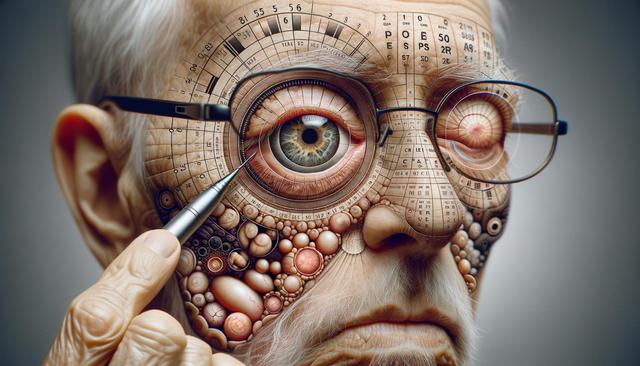Understanding Age-Related Macular Degeneration
Age-related macular degeneration (AMD) is a condition that primarily affects individuals over the age of 50, leading to deterioration of the macula, which is responsible for sharp, central vision. This condition exists in two forms: dry AMD, which is more common and progresses slowly, and wet AMD, which is less common but can lead to rapid vision loss. Understanding the types and progression of AMD is crucial for managing its impact on daily life. The early stages may not present noticeable symptoms, but as the disease progresses, individuals may experience blurred vision or dark spots in their central view. Regular eye examinations are essential for early detection and monitoring, which can significantly aid in managing the condition effectively.
Lifestyle Changes to Slow Progression
Implementing specific lifestyle changes can play a vital role in slowing the progression of AMD. A diet rich in leafy green vegetables, fish, and other foods high in omega-3 fatty acids is recommended for supporting eye health. Antioxidant-rich fruits and nuts can also be beneficial. Additionally, maintaining a healthy weight and avoiding smoking are critical, as smoking is a significant risk factor for AMD. Regular exercise boosts circulation, which is beneficial for overall eye health. Those at risk or diagnosed with AMD should consider incorporating these lifestyle habits to potentially slow the disease’s progression.
Medical Treatments and Interventions
While there is no cure for AMD, medical treatments can help manage symptoms and slow the disease’s advancement. In the case of wet AMD, anti-VEGF (vascular endothelial growth factor) injections can be administered to reduce the growth of abnormal blood vessels in the retina. Laser therapy is another option, which can help seal leaking blood vessels. For dry AMD, while direct treatment options are limited, taking supplements such as vitamins C and E, zinc, and copper, as recommended by health professionals, might help reduce the risk of progression. Regular consultations with an eye care specialist are crucial to tailor the treatment plan to the individual’s needs.
Preventive Measures for Eye Health
Prevention plays a critical role in managing AMD and maintaining overall eye health. Engaging in regular eye exams allows for early detection and timely intervention. Protecting the eyes from excessive sunlight by wearing UV-protective sunglasses can also help reduce risk. Additionally, managing other health conditions such as hypertension and high cholesterol is important, as these can exacerbate AMD. Engaging in activities that reduce eye strain, such as taking breaks during screen time and ensuring proper lighting when reading or working, also contributes to better eye health.
Living with AMD: Coping Strategies
Living with AMD requires adapting to changes in vision and finding ways to maintain independence. Utilizing magnifying tools and other assistive devices can help individuals perform daily tasks more easily. Many find that adjusting lighting in their homes and using high-contrast settings on digital devices enhances visual clarity. Support groups and counseling may offer emotional support and practical tips for coping with AMD. Staying informed about new research and technological advances in AMD treatment can also empower individuals and their families to manage the condition more effectively.
Conclusion
Age-related macular degeneration is a significant concern for older adults, but proactive measures can make a notable difference. By adopting healthy lifestyle habits, seeking appropriate medical treatments, and utilizing preventive measures, individuals can manage AMD more effectively. Support and resources are available to help those affected maintain their quality of life and independence, even as they adapt to changes in vision. By staying informed and engaged in their eye health, people with AMD can take charge of their condition and live fulfilling lives despite the challenges posed by this condition.
